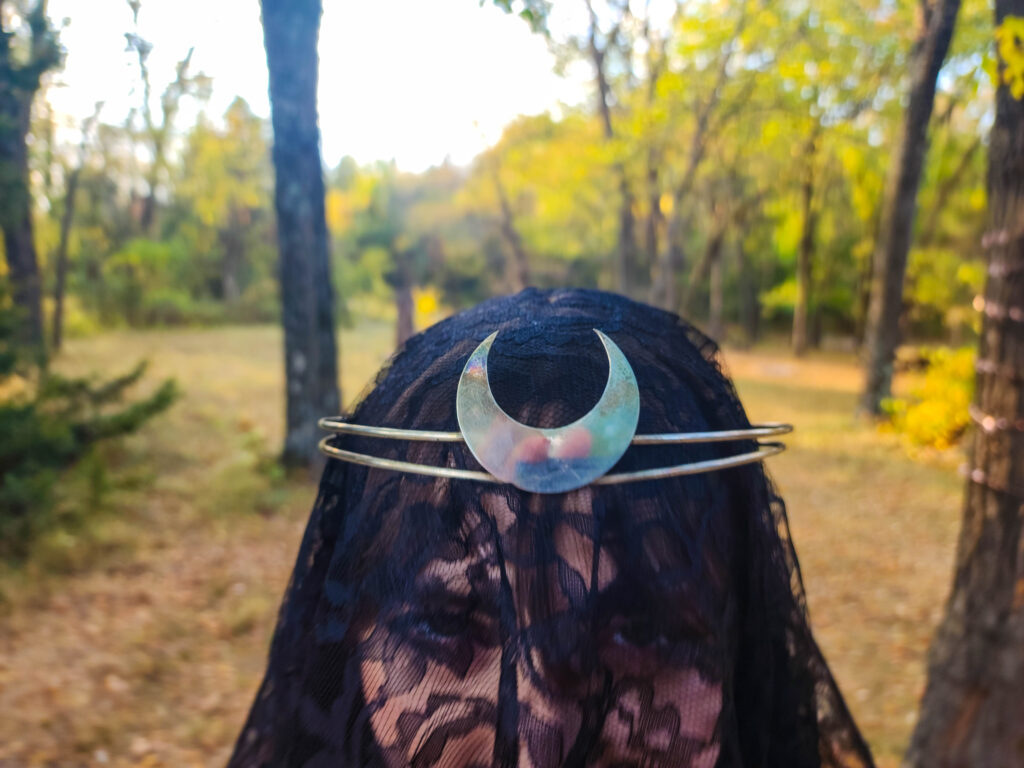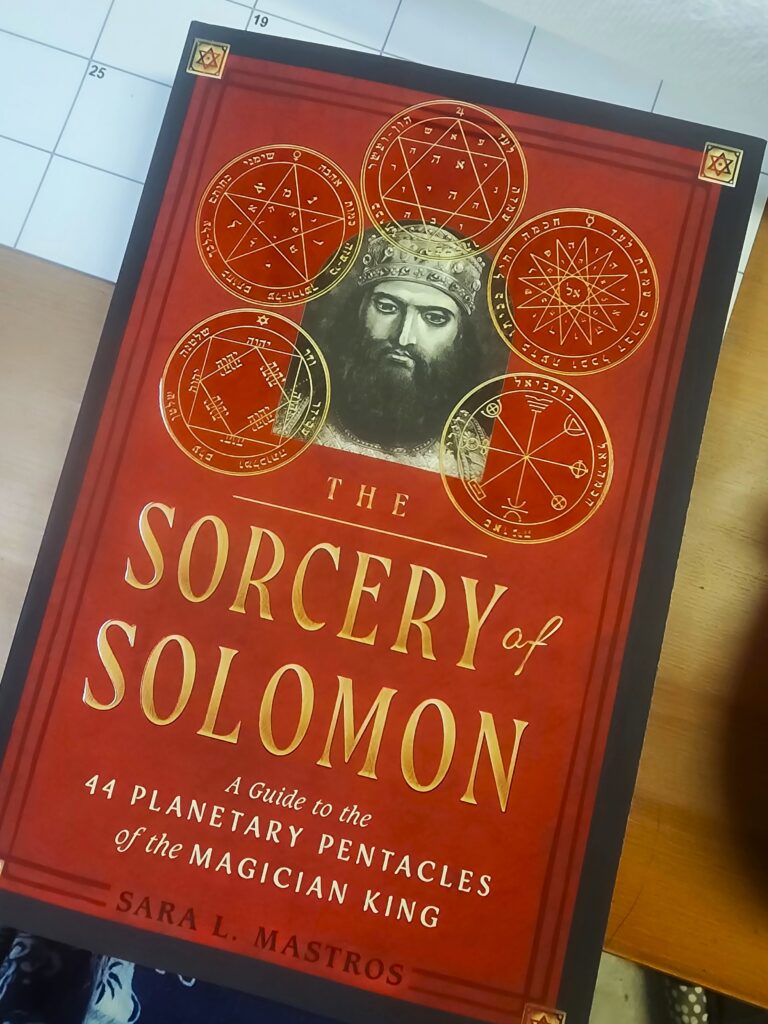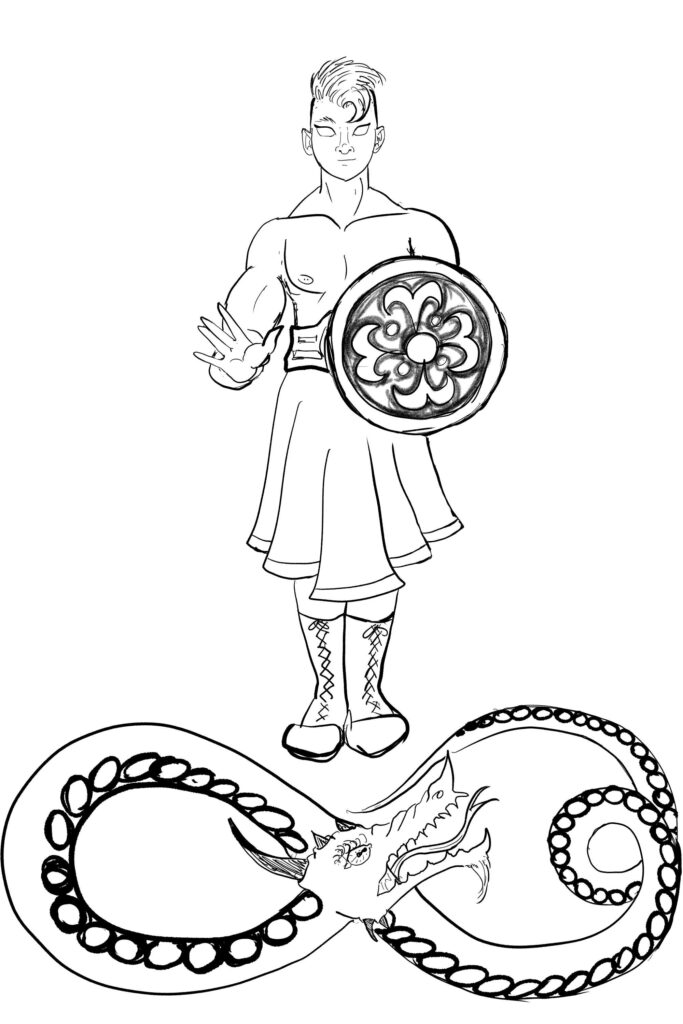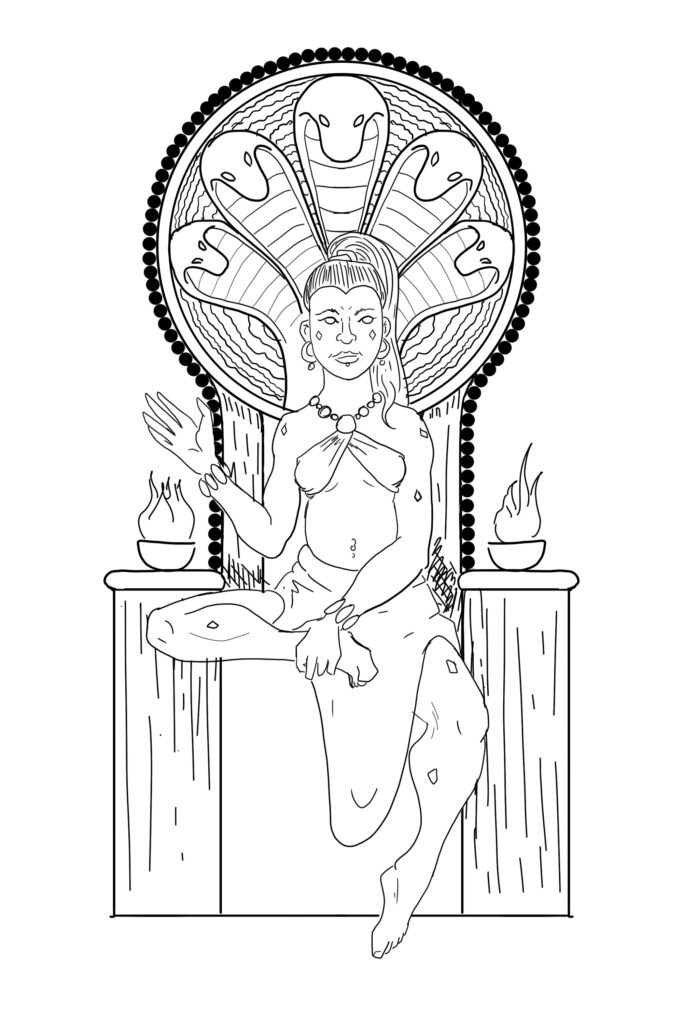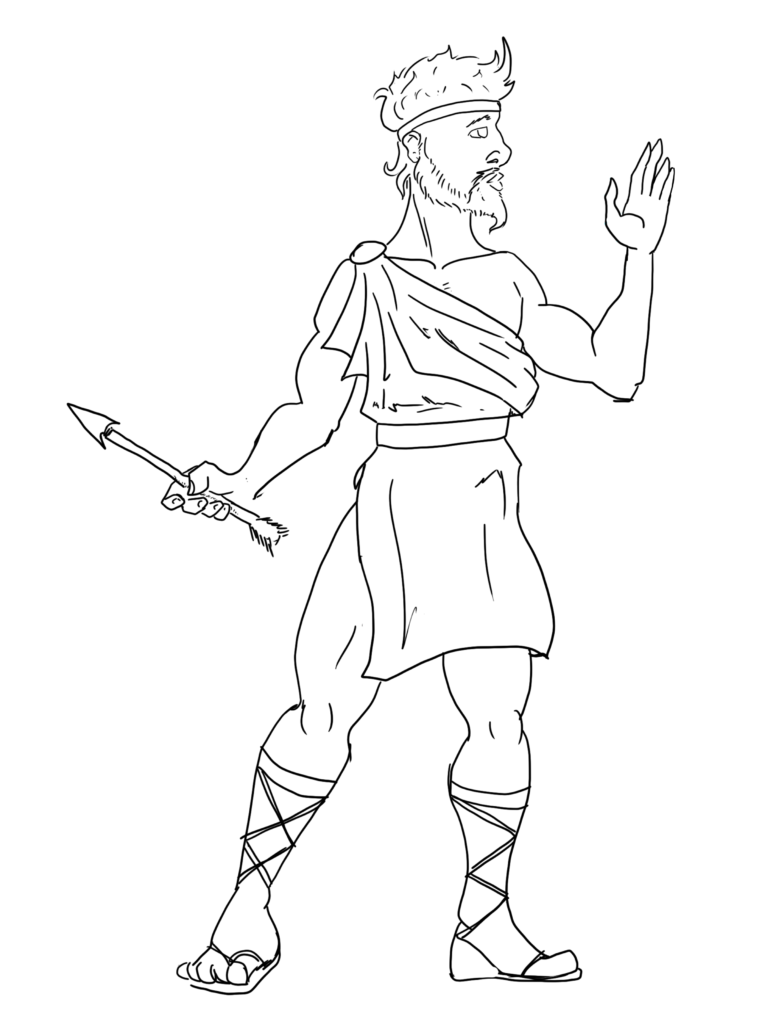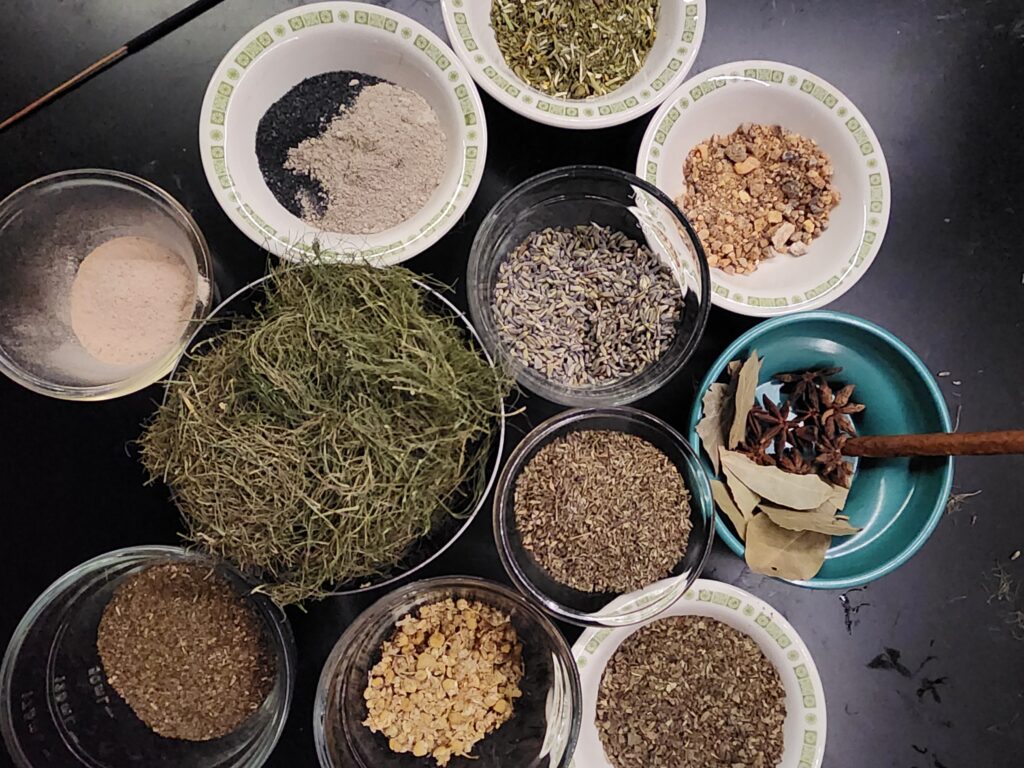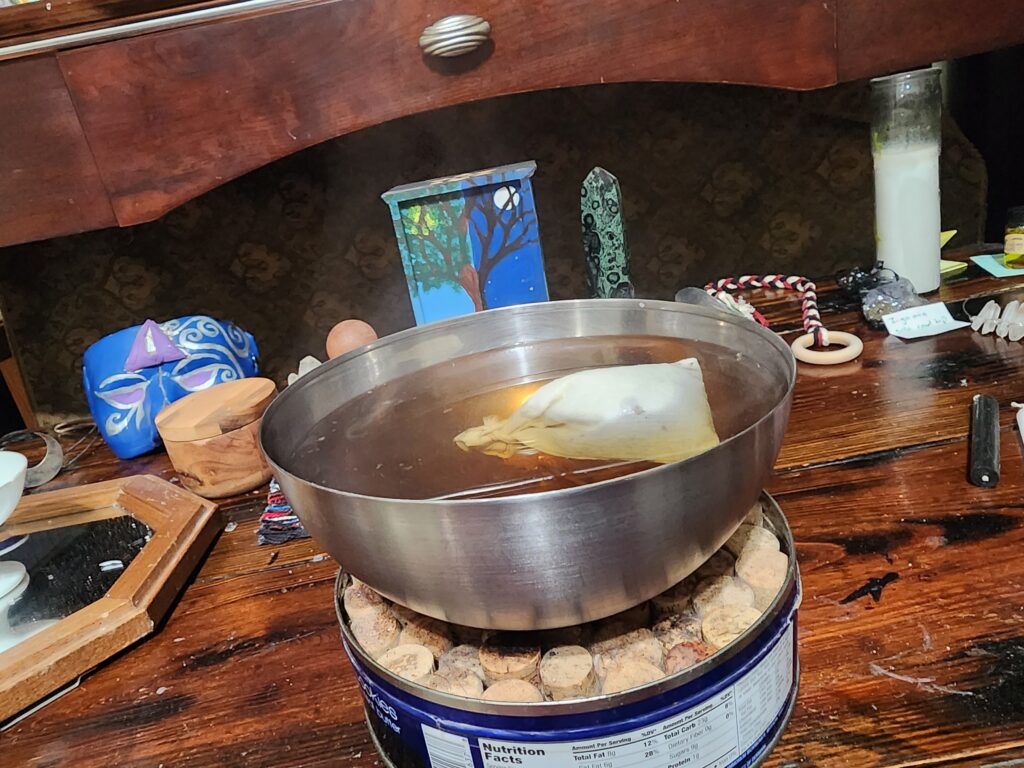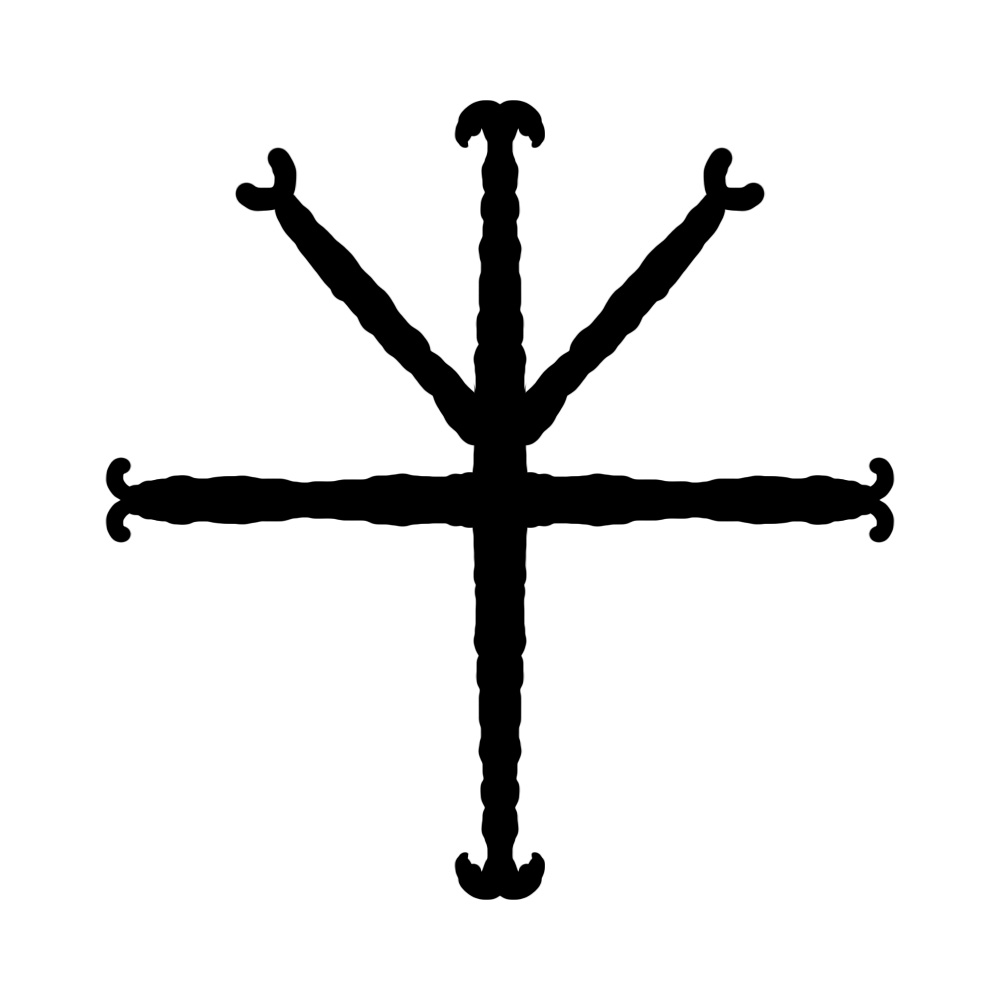
At forty-three years of age and art-making, after twenty-seven years of magic and mysticism, I can say for certain that two things are true: much of what we call our “selves” and “personalities” are, in fact, behaviors and habits that can be changed with sufficient effort; and, also, there are parts of ourselves that are innate, the products of fate or consequence, which we cannot change, no matter how we might wish. I have changed and grown a great deal over the course of my life, the (mostly positive) results of a life committed to doing better, to being better, to more positive outcomes. I have done so in ways that others have found enviable … and also terrifying and hateful. At the same time, there are parts of myself that, no matter how badly I or those around me might wish I could change, that seem fixed, utterly immutable.
For as long as I can remember, I have sought out mystic experiences and Mystery, both through sacred connections with the people in my life, and through my magical practices. I began my earliest research at the age of thirteen, and began practicing magic at the age of sixteen. From that day forward, I have had few friends who weren’t fellow travelers on this path, and those who did not share my proclivities had to be prepared to hear about those experiences.
At the same time, many of my earliest memories are of teenage and pre-teen efforts to reconcile the exoteric practices and theologies of late Satanic Panic Middle American Christianity with the actual text of the Bible (inasmuch as even a precocious child could actually understand that book). The clear rules the Bible presented, and the punishments promised for the breaking of those rules, and the clear lack of punishment for the wicked in the modern world, made one thing abundantly clear to my ten- or twelve-year-old self: the God of the Bible was a bully who enforced rules as he saw fit, just like the bullies in my life and the authorities who enabled them. When, a few years later, I learned that other gods existed, it was implicitly obvious to me that they were of the same moral fiber.
In the thirty years since, despite my best efforts, I have been utterly unable to shake that bone-deep conviction.
I say “despite my best efforts”, because I have, in fact, attempted to change that. In the beginning, I tried to believe in and pray to a generic eclectic Wiccan goddess that I could never quite feel or fully believe in, but I could never get past the pervasive (and not particularly theologically sophisticated) “all gods are the God; all goddesses are the Goddess” monism of late-1990s and early 2000s Paganism. Later, in my middle and late twenties, I renewed my efforts to find gods worthy of worship; I couldn’t get past all the rape and warmongering in the mythologies I could get my hands on. My earliest visionary journeys included trips to the upper worlds where I encountered gods that I had tried to worship, with decidedly mixed results.
A more rational person, perhaps, would have given up the pursuit of magic and mysticism years ago. But that just doesn’t seem to be who I am as a person. My earliest magical experiments (besides an obsessive teenage preoccupation with wards, shielding, and other magical protections) were in astral projection and trying to develop my psychic senses. Those experiments ultimately led me to “shamanic” visionary work and to my conjuration experiments and to the trance possession experiments I just wrote about. I wanted to see the parts of the world I couldn’t see. I wanted to experience the larger cosmos. I wanted to communicate with the spirits that I could see and feel but not hear.
I still want all those things.
And so I have persisted.
Rites and rituals and research, escalating experiments both solitary and with my Lunar Shenanigans crew.
I have said before, and I will say again, that the one god with whom I have anything like a “religious” relationship is Dionysus. That one god has answered my prayers with ecstasy and insight. That one god has shown up in my visions consistently, meaningfully, and helpfully. That one god I love in spite of all the other assholes who worship him.
I accidentally started a Hekate cult. The crew has never shared my ambivalence toward divinity, and Hekate just … kept being the right number call for any given Esbat. One ritual led to another led to another led to another until I decided it just seemed polite to buy an idol for our rites. Then came the Hekataeon. Hekate is the one god who gets her own altar in our house, not shared with anyone.
For two, maybe three years, I poured out daily offerings to Baphomet, Aphrodite, Eros, Lucifer, Dionysos, and Hekate. Over the last two summers, I have had intense visionary experiences at my morning prayers: potent divine visitations that left me shaking and crying. I had experiences that I can’t even tell my closest conspirators about, because it’s “monks locked in a tower with nothing but ergot rye bread” levels of crazy. I experimented with deity possession, opening my mind and my body to be ridden by Hekate, Baphomet, and Eros Protogonos, and receiving visions from other deities as my co-conspirators took their own turns in the hot seat.
And then, somehow, it all came crashing down.
In retrospect, I can identify some of the factors that led to my collapse.
Last summer, at the height of certain workings, I learned that a spiritual teacher whose work I had based a great deal of my practice on had stalked a friend-of-a-friend back to her hotel room. On the one hand, what the fuck to I expect of straight white men in positions of authority? Real talk: exactly that; I had been waiting for him to fail in pretty much exactly that way. On the other hand, it hurt me much more than I expected to be proven right, and while I went on and published all the writing I had already queued up, I have not been able to continue that work, and that knowledge has … fundamentally undermined my relationship with the goddess in question.
My failure to make myself a vessel during what proved to be the last meeting of the Possession Club was … deeply hurtful to me. In addition to the obvious and, I think, understandable disappointment, it also hit me in my pride and my self-confidence.
The October eclipse fucked me up good. It amplified everything else that was going on inside and around me. In a very real sense, things didn’t start turning around until the second half of the eclipse-pair hit in April.
Also in October, I got chased out of a local pagan meetup. I thought it was going to be a good group because it was run by two trans men. I honestly thought I was making friends. But it turned out that the group was half Nokean Heathens who expected everyone to just know without being told that speaking Loki’s name aloud was taboo and were not prepared to have that taboo questioned. They were also not prepared to hear any criticism white ancestor worship.
All that, combined with more mundane difficulties in my social circles, the soul-crushing effort of self-promotion on modern social media, my second round of Covid, the ever-rising prevalence of Christofascism and the horrors that the US government is facilitating around the world, and the worst depression of my adult life …
I feel like I have lost all the progress that I have made over the last ten years.
I am back in a place where, despite the mystic impulse that has followed me for literally longer than I can remember, I am blindingly blisteringly angry at the gods and anyone who loves them. That anger is obsessive. It keeps me from my work during the day and keeps me from sleeping at night. It interferes with my ability to do magic, to exist in magical communities.
It took me nearly twenty years, from my first offerings to Dionysus, Hephaestus, and Apollo, back in 2007, through visionary journeys and ecstatic rituals and trance possession, to get to my apotheotic experiences of the summer of 2023. To find myself here, feeling like I’m back where I started, hurts more than I have words for. So now I’m in a place both where I feel like I need to write about it … and can’t write about it.
Part of the problem, is that I don’t know how to talk about the gods and my struggles with them without insulting and alienating my friends and followers who sincerely love them. I feel like even alluding to the anger and alienation I’m feeling is a threat to those relationships. Expounding on those feelings in any detail? Almost impossible.
Part of the problem is that the only way I have ever figured out to do the work I want to do is to just … put that anger and distrust out of mind, and hope that the ecstasy of magic and apotheosis will magically make it go away. Clearly, fucking clearly, that hasn’t happened. Which only reinforces my deep-seated suspicion that antitheism is not just a thing I learned very early in life, but an intrinsic part of who I am as a person, every bit as much as my art.
So here I am.
Hurt. Angry. Afraid. Fighting to reconcile two parts of my nature: the inescapable desire to do magic, to experience Mystery, to seek the gods; and a bone-deep suspicion that the gods are corrupt authorities who should face the gallows alongside their mortal counterparts. I have jokingly described this conflict as a fundamental urge to find God and punch Him in the dick.
Honestly, I don’t know that I’ll ever really be able to fully reconcile those two natures. It’s possible that I don’t even need to. It’s possible that what I really need to wrestle with is the blinding, murderous rage that rises when those two parts of my nature come into friction.
I do know that this will not be the last time I talk about my deep, painful ambivalence towards the gods. And I know that, the deeper I dig into this, the more likely I will be to offend or even hurt my friends and other readers. I promise is that I am doing my best to approach this in good faith, to work my way through this pain without lashing out. I apologize for any pain I cause to you while I work through my own.

